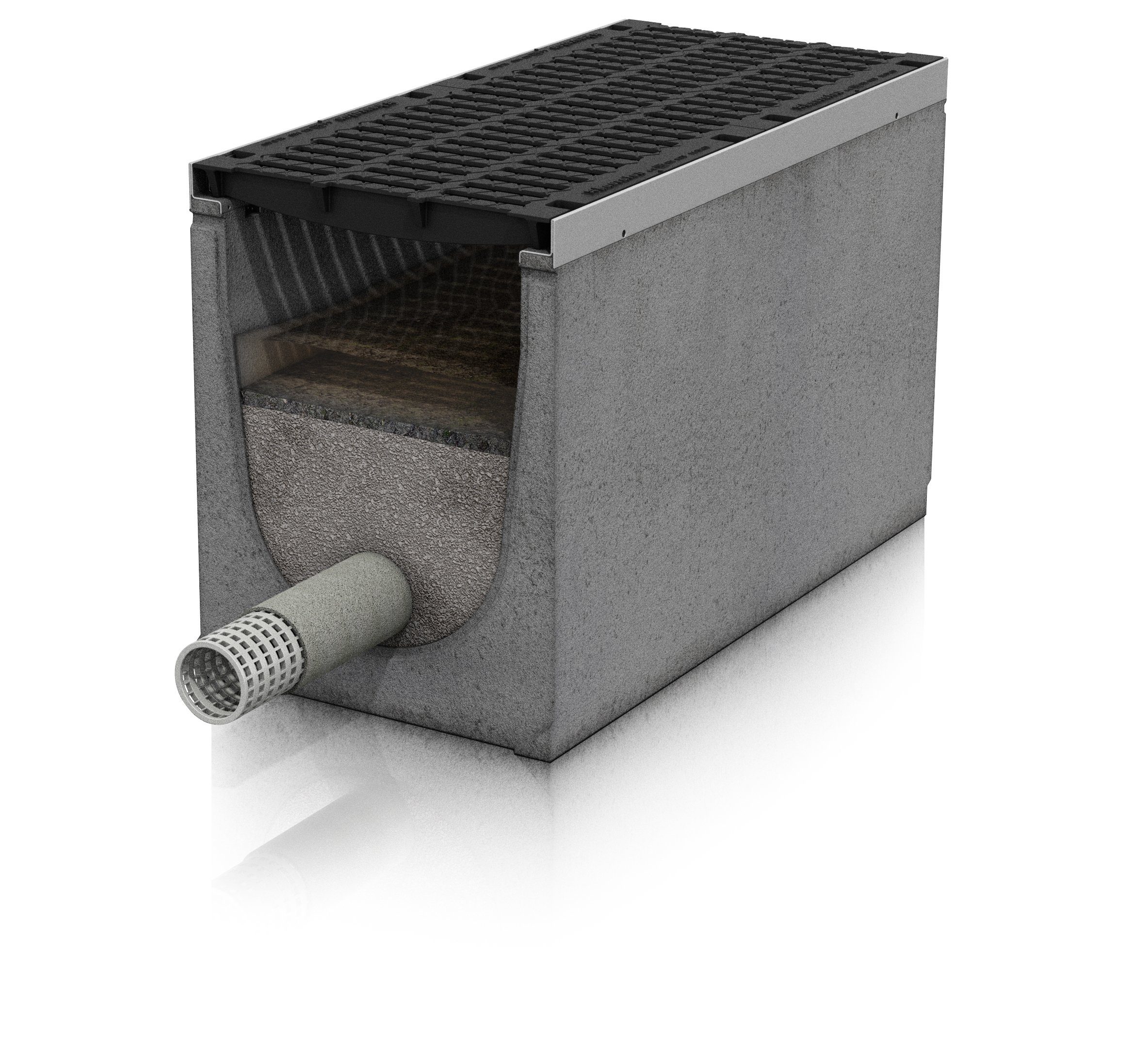Fundamental modernisation – the chance for contemporary drainage
The initial situation: the station no longer met current requirements, so Deutsche Bahn initiated reconstruction work on various levels. In addition to the fundamental modernisation, the station was equipped with a tactile guidance system for the blind and visually impaired. Platforms were extended and new pedestrian walkways were installed with lifts and staircases. Barrier-free access to the trains required the platforms to be raised to 55 cm or 76 cm above rail level. This was a complex reconstruction project that also opened up opportunities for new, high-performance drainage channels on the platforms – and a future-proof overall solution for treating rainwater.
The new drainage systems have been seamlessly integrated into the station architecture. Until now, rainwater was drained into collecting pipes below the station and then into the sewage system. This is a traditional and still widespread approach, but one that can lead to a risky exceeding of capacities in the collecting pipes during heavy rainfall – and also does not provide for any cleaning of the water. The new DRAINFIX CLEAN filter channel system removes and permanently filters pollutants such as oils, greases, solids, etc. from the water. The German Association for Water, Wastewater and Waste (DWA) also relies on such an environmentally friendly and effective water treatment in its new regulations to protect the environment and human health.
Conclusion and outlook
The new measures have made Rastatt station a model location for Deutsche Bahn. There is a growing awareness of economic efficiency at DB, and in addition to the photovoltaic systems that are already widely used to generate electricity, there is a growing trend towards using similar concepts for rainwater management. Combining rainwater and energy management is also a promising approach for the future. This means that stations have enormous potential to become sustainable places and real savers of resources.


